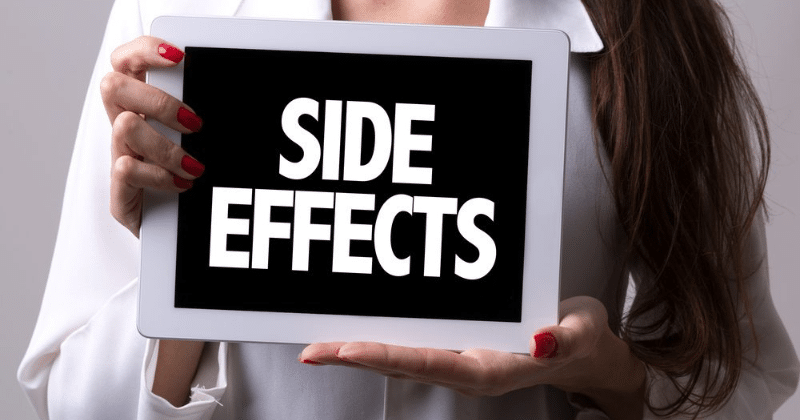In recent years, post-cycle therapy (PCT) has become a popular method for bodybuilders and athletes to mitigate potential side effects from using anabolic steroids. PCT involves the use of various medications and supplements to help restore natural hormone levels in the body after a cycle of steroid use.
This not only helps prevent unwanted side effects such as gynecomastia and testicular shrinkage, but also aids in maintaining the gains made during the cycle. However, there is still much debate surrounding the effectiveness and necessity of PCT. In this article, we will explore the potential benefits and drawbacks of post-cycle therapy and whether or not it can truly mitigate side effects.
Understanding Steroids and Their Side Effects

Before delving into PCT, it is important to understand the mechanisms behind anabolic steroids and their potential side effects. Anabolic steroids are synthetic variations of the male sex hormone testosterone, designed to promote muscle growth and enhanced athletic performance. However, along with these desirable effects, they also come with a range of negative side effects including hormonal imbalances, liver damage, and cardiovascular issues.
Some of the most common side effects of steroid use include acne, baldness, and an increase in estrogen levels which can lead to breast tissue growth in men. These side effects are a result of the body’s natural testosterone production being suppressed during steroid use, leading to imbalances in hormone levels.
Can PCT Help Mitigate Side Effects?
As mentioned earlier, post-cycle therapy involves the use of medications and supplements to restore natural hormone levels in the body after a cycle of steroid use. The idea behind PCT is that by stimulating the body’s natural production of testosterone, it can help mitigate potential side effects from steroid use.
One of the main ways that PCT aims to achieve this is through the use of selective estrogen receptor modulators (SERMs) such as tamoxifen and clomiphene. These medications work by blocking the effects of estrogen, which can help counteract the increase in estrogen levels caused by steroid use. By doing so, they can help prevent or reduce potential side effects such as gynecomastia.
Another commonly used medication in PCT is human chorionic gonadotropin (hCG), which works by mimicking the effects of luteinizing hormone (LH) in the body. LH is responsible for stimulating the production of testosterone in the testes, and hCG can help stimulate this production during PCT when natural levels are suppressed.
Along with these medications, many PCT protocols also include supplements like D-aspartic acid, which is believed to help increase levels of luteinizing hormone and testosterone in the body.
How PCT Mitigate Potential Side Effects: Evaluating the Evidence
While PCT may seem like a logical and effective way to mitigate potential side effects from steroid use, there is still much debate surrounding its effectiveness.
Some studies have shown that PCT can help restore natural hormone levels and reduce estrogen-related side effects, while others have found little to no difference in outcomes between using PCT or not. Additionally, there is also concern that prolonged use of medications like SERMs and hCG can have their own negative side effects.
Furthermore, PCT may not be necessary for every individual who uses steroids. Factors such as the type and dosage of steroids used, as well as an individual’s genetics and overall health, can all play a role in determining the need for PCT. It is important for each individual to carefully evaluate their own situation and discuss with a medical professional before deciding on whether to use PCT.
Also, it is worth noting that PCT should not be seen as a way to completely eliminate all potential side effects of steroid use. Rather, it can help mitigate some of the most common and concerning side effects but may not prevent them entirely.
Should You Use PCT?
The decision to use PCT ultimately depends on the individual’s personal goals, health status, and risk tolerance. While it can potentially help mitigate some side effects of steroid use, it is not a guaranteed solution and may come with its own set of risks.
It is important to carefully weigh the potential benefits and drawbacks of PCT before incorporating it into your post-cycle routine. Consulting with a medical professional and closely monitoring your hormone levels during and after a cycle of steroid use can also help inform your decision.
In addition to PCT, there are other ways to help mitigate potential side effects from steroid use. These include maintaining a healthy lifestyle, including proper nutrition and exercise, as well as using lower doses of steroids and cycling them responsibly.
Alternatives to Steroid Use
Here, we have discussed the potential benefits and drawbacks of post-cycle therapy as a means to mitigate potential side effects from using anabolic steroids. However, it is also important to consider alternatives to steroid use altogether.
There are various natural ways to enhance athletic performance and build muscle without resorting to synthetic hormones. These include following a well-rounded exercise routine, proper nutrition and supplementation, and getting enough rest and recovery.
Ultimately, the decision to use steroids and incorporate PCT should be carefully considered and discussed with a medical professional. While they may offer short-term gains, the potential long-term side effects can outweigh any temporary benefits. When it comes to our health, it is always better to err on the side of caution and make informed decisions.
Pros and Cons of PCT
To summarize, here are the potential pros and cons of using post-cycle therapy to mitigate side effects from steroid use:
Pros:
- May help restore natural hormone levels after a cycle of steroid use
- Can potentially reduce estrogen-related side effects such as gynecomastia
- May be necessary for some individuals based on factors like type and dosage of steroids used, genetics, and overall health
Cons:
- Effectiveness is still debated and may not be necessary for everyone who uses steroids
- Prolonged use of medications in PCT can have their own negative side effects
- Should not be seen as a guarantee to eliminate all potential side effects of steroid use
FAQs
How does PCT help mitigate side effects from steroid use?
PCT aims to stimulate the body’s natural production of testosterone, counteract increased estrogen levels, and prevent or reduce potential side effects such as gynecomastia.
Is PCT necessary for everyone who uses steroids?
No, the need for PCT can vary based on factors like steroid type and dosage, genetics, and overall health. It is important to consult with a medical professional before deciding to use PCT.
What are the potential risks of using PCT?
PCT may come with its own set of risks, such as negative side effects from medications used in the protocol. It is important to carefully weigh the potential benefits and drawbacks before incorporating PCT into your post-cycle routine. Some individuals may also experience no significant difference in outcomes with or without PCT.
Conclusion
Post-cycle therapy has been a popular method for mitigating potential side effects from steroid use. While it may offer some benefits, there is still much debate surrounding its effectiveness and potential risks. It is ultimately up to each individual to carefully assess their own situation and consult with a medical professional before deciding whether to incorporate PCT into their post-cycle routine.
Alternatives to steroid use also exist and should be considered as a safer option for enhancing athletic performance and building muscle. As with any decision regarding our health, it is important to prioritize informed decisions based on individual needs and potential risks. So, always consult a medical professional before making the decision to use steroids or PCT.

